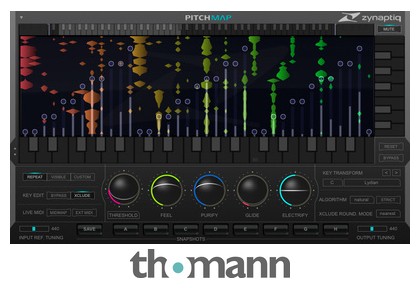

As a result, processing voice simultaneously with other instruments has been a challenge in the past. The human voice, however, has a very specific sonic topology that is very different from any musical instrument, and human hearing is trained to detect even the most subtle sonic variations in a voice. Hence our process is inherently very natural sounding with correct settings and reasonable amounts of pitch modification. Our MAP process is based on a model of the human perceptive system, including the cochlea and the brain region responsible for interpreting its data. MAP also enables PITCHMAP's simple-to-use, yet very effective functions for suppressing or isolating mix elements. The separated sounds can then be individually tuning-corrected and mapped to other pitches, a process we call Pitch Mapping. This technique is quite literally rocket science, and is done using perceptive modeling and pattern recognition techniques also used in artificial intelligence applications.
#Zynaptiq pitchmap tutorial professional
Create instant remixes and professional accompaniment tracks directly from your favorite songs or play listīased on our Mixed-Signal Audio Processing technology (MAP), PITCHMAP internally de-mixes the input signal into individual sounds, including their harmonics and transients.Creating unique synthesizer sounds based on a live input.Mix element suppression under MIDI control.Rapid song/score prototyping using existing recordings that can be transformed to be something new on-the-fly.Mash-Up artists and Re-Mixers now spend minutes instead of hours (or days) adapting the components they use to fit each other.Sound designers get a bunch of unique new ways of creating the sounds that make the films and games of today so immersive.DJs can adapt the key/scale of their songs to fit into a seamless set.

Music producers that work with sampled material can now sculpt the music inside the samples as if they were clay in the hands of a potter.



 0 kommentar(er)
0 kommentar(er)
